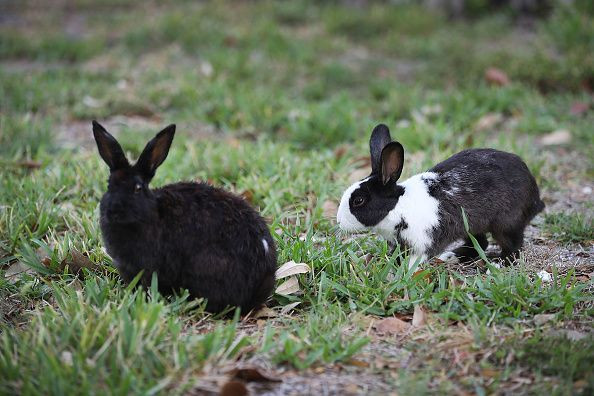Highly Contagious 'Rabbit Disease' Outbreak In Utah: What You Need To Know
KEY POINTS
- A deadly rabbit disease is spreading in multiple states in the U.S.
- The disease can cause deaths within days after contracting it
- Officials recently confirmed the presence of the disease in northeastern Utah
A highly contagious "rabbit disease" has now spread to northeastern Utah, officials have warned, urging people to take necessary steps to protect their pets from the deadly disease.
Rabbit Hemorrhagic Disease Virus Serotype 2 (RHDV2) is a very contagious disease that is caused by a calicivirus called rabbit hemorrhagic disease virus. According to the U.S. Department of Agriculture (USDA), unlike other rabbit hemorrhagic viruses, RHDV2 can affect both domestic and wild rabbits.
As a "swift" killer, the virus can kill a rabbit within three to five days of the exposure, said House Rabbit Society, a nonprofit. In many cases, the only signs of the disease are sudden death and blood-stained noses from internal bleeding.
According to the House Rabbit Society, there is no known cure for RHDV2.
RHDV2 in the U.S.
RHDV 2 was detected in a domestic rabbit in New York City in February, making it the third detection of the disease in the U.S. since 2018, according to the USDA. Since then, it has spread to other states including California, Nevada, Texas and Colorado.
"For the first time, the virus is causing deaths in wild rabbits and hares native to North America and is spreading rapidly," House Rabbit Society said.
In Utah, the disease was first detected in a private rabbit farm and later, in the rabbit populations of southern Utah. By September, the Utah Department of Agriculture and Food had noted six confirmed rabbit hemorrhagic disease cases in the state.
Now, officials warned the disease was spreading to northeastern Utah, New York Daily News reported, with multiple cases confirmed in different regions in the past weeks.
Human effect
Although the virus does not impact human health, humans do have a role when it comes to the spread of the disease. This is because people can spread RHDV2 by carrying the virus on their shoes or clothes.
So, even if rabbits are always kept indoors, they can still contract the virus through contaminated surfaces.
Protecting pet rabbits
The USDA and House Rabbit Society shared several tips on how to protect pet rabbits from the virus and prevent the disease from spreading further:
- Prevent pet rabbits from getting in close contact with wild rabbits; so it's best to keep pet rabbits indoors and prevent wild rabbits from getting inside the house.
- Don't touch any dead wild rabbits, especially if the area is known to have a confirmed case. People who come across dead wild rabbits should take a photo, remember the location and report the sighting to state wildlife officials.
- If a rabbit dies, it's important to contact authorities for guidance on how to properly dispose of the carcass.
- Always wash hands properly after handling rabbits. It's also important to disinfect contaminated objects with 10% bleach or 10% sodium hydroxide mixed with water.
- Do not feed pet rabbits with foraged grasses and plants, especially if the area has an outbreak of cases.
- While adding new rabbits to a home or facility, it's best to quarantine them for at least 14 days before letting them join with other rabbits.
- Get pet rabbits vaccinated against RHDV. Although it is not 100% effective, it does increase the rabbits' chances of survival. Although a vaccine is still not widely available in North America, some states with outbreaks are granted special permission to import European vaccines, House Rabbit Society said.

© Copyright IBTimes 2025. All rights reserved.






















